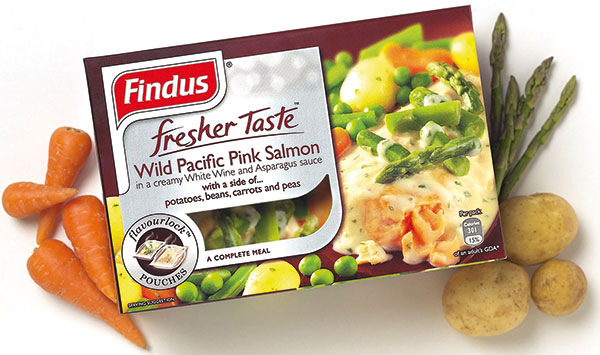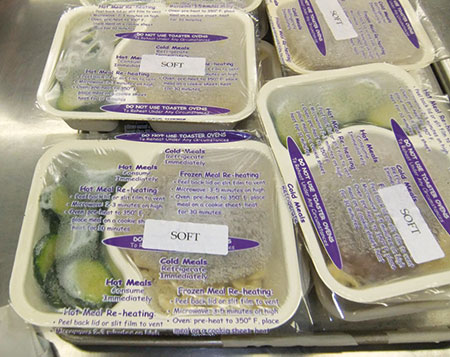Frozen foods
Characteristics and numbers The frozen foods market is one of the most dynamic in terms of consumption trends, product innovation and variety. And in spite of a few setbacks, frozen foods continue to enjoy consumers’ favor.
According to data calculated by the sector association IIAS (Italian Frozen Foods Institute), total consumption of frozen foods in Italy reached 829,399 tons in 2012.
Characterized by an average annual growth rate of 2% from 2002 to 2009, the market slowed down starting in 2010: +1.6% in 2010, more or less stability in 2011 and a 1% drop in 2012.
Also according to IIAS, however, out of a sample of 14 million consumers, 67% stated that they use frozen products at least once per week. This is due to the spread of single member households (young people and the elderly), as well as the many work commitments of men and women.
The average unit weights of consumers’ preferred packagings do not exceed 500 g, but there is also an increase in demand for small format packagings, which entail lower packaging and transport costs (this is the case of single dose solutions and portionable systems for consumption spread out over time); products suitable for microwave cooking are also on the rise.

Product types
There is a diverse range of frozen products, which can be divided into five areas: fruit and vegetables; fish products; ready meals; meats; and pasta, bread and other products.
In quantitative terms, frozen fruit and vegetables hold the largest share (63.7%), with an average annual growth rate of 1.4% recorded between 2002 and 2012. In recent years, the variety of vegetables on offer has progressively expanded.
The area of fish products, on the other hand, accounts for 13.5% of the total: their growth rate during the last ten years has been approximately 2% annually on average. Fish prepared as a ready meal (seafood mix or breaded fishsticks) performed best. The area of ready meals is the most recent one and currently accounts for 19% of the total frozen foods market. Its growth trend, from 2002 to 2012, averaged 1.7% annually. Following significant growth up until 2007, in recent years the trend has dipped, both due to the economic crisis and to consumer perception, ready meals being seen as impersonal industrial products. Within this family of products, pizzas and snacks stand at 52%, showing the best growth trends.
That of meats - mainly hamburger - is one of the historic sectors: 3% of the total supply. Consumption has more or less stabilized, but from 2002 to 2012 the growth rate of frozen meat stood at an annual average of 1.4%.
Bread and semi-processed pastas and other types of frozen foods are moving in the opposite direction: in fact, this has been the only area of frozen foods in which consumption has dropped progressively since 2011, while in 2012 it increased slightly.
 Packaging
Packaging
The main primary packaging type used for frozen foods has been the paperboard box to which is added, in some cases, a plastic bag in contact with the product.
Over the years the distribution of packaging types has progressively changed in step with the greater number of packaging types.
- At the moment, the classic paperboard box accounts for 7.3% (in 2002 it was 8.9%).
- The most commonly used packaging is the plastic film bag, which, depending on the contents, is offered in two versions: bag only or bag plus plastic tub in contact with the product. Since 2002 this solution has grown progressively, passing from 68.9% in 2002 to 72.7% today. The single bag dominates, widely in use for frozen fruit and vegetables.
- Packaging which includes a paperboard box in combination with, depending on the products, either a plastic bag or a tub, accounts for 17%.
This type has dropped slightly since 2009, stabilizing at the current numbers, and is used for fish products, meats, and certain bread and pasta products, as well as ready meals.
- The aluminium tub holds a market share of 3%. This solution is used mainly for ready meals, but projections based on current trends predict a drop, considering the progressive growth of the plastic tub’s use.
- Corrugated cardboard boxes and pallets are the tertiary packaging used for the frozen food sector.
In 75% of cases, the former are used for handling (the remaining 25% is palletized without the classic corrugated cardboard box).
As for pallets, there are three types: disposable wood, reusable wood and reusable plastic.
- Wood pallets accounted for 97% in 2002; 95% in 2012 (during this time there has also been a considerable increase in the use of reusable pallets, which rose from 84% to 95%).
- Plastic pallets accounted for 3% in 2002; 3.5% in 2009; 5% in 2012.
Over time, the most important innovations have had to do with the reduction of average weight of both the primary packaging and the corrugated cardboard boxes. In the coming years, the main innovations will relate to the use of bioplastics and recycled plastics for the production of tubs and bags.
Frozen foods: from Labrador to the table
In 1925, during a hunting and fishing expedition in Labrador (Canada), the American naturalist Clarence Birdseye observed the Eskimos quickly cleaning their catches and exposing the meat to the freezing air, causing it to freeze in very short time. He noted that, months later, when the food was defrosted for cooking and eating, it had preserved its natural flavor and freshness.
From that experience, Birdseye realized that the secret to preserving the quality of food products lay in quickly freezing to -40° C. And he also understood that the frozen fish products being sold in New York were of poorer quality than the frozen fish in Labrador, since the freezing systems used for the former entailed higher operating temperatures. With this premise, Birdseye began his own experiments, and in 1930 he founded the concern that still bears his name, in order to produce and sell “ quick frozen foods”.
The events of the Second World War, and in particular the necessity for huge quantities of ready food for the armed forces, caused major growth in the frozen foods industry. Consumption of frozen foods established itself in the USA only in 1948, with the launching of an orange juice. Since then its history has been one of constantly expanding growth and success in every other part of the world, including Italy.
Plinio Iascone
Istituto Italiano imballaggio



















